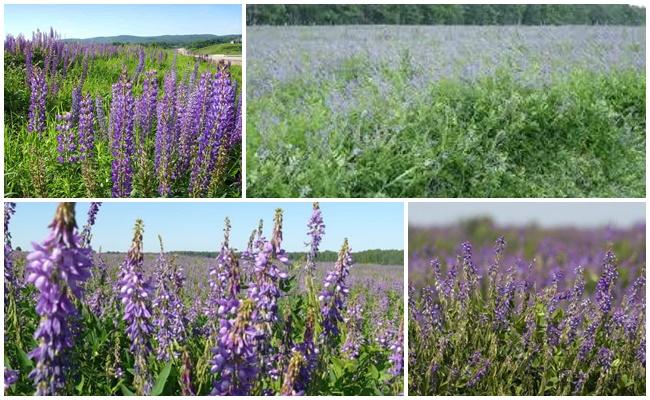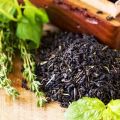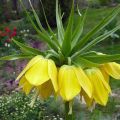Description and seeding rate of forage grass goat's rue, its application for goats
From official, verified sources about the goat's rue, grass for forage crops, its use by humans, you can find out that this is a plant of the genus Galega, which is subdivided into several species. In Russia, medicinal and oriental are most often grown. Also found in the steppes, along rivers or streams in Ukraine, Moldova. Next, we will consider in detail the beneficial properties of the plant, its use in medicine.
Description and medicinal properties
The goat's rue is a perennial plant that grows to a height of 50-80 centimeters. The root is weak, rod-like. The stems are straight, the leaves look typical for legumes, they are pinnate. During the growing season, the plant is dotted with many light blue or pale purple inflorescences that make up small brushes. The fruits are small, up to 4 centimeters in size. They resemble beans in appearance.
Under natural conditions, it grows in Europe (southern, central, eastern parts), Italy (west and south). Often used as pet food. The flowering period is in July-August, the ripening of the fruits is in August-September. Since the flowering is stretched out over time, and the inflorescences themselves look nice, the goat's rue can be used in garden decor. The plant's name is based on its purpose: the word form "Galega" is formed from "gala" - milk and "agein" - that leads to the stimulation of lactation.
Currently, the goat's rue has found application in folk medicine as a proven diaphoretic, diuretic and lactation enhancer. It is believed that eating parts of the plant improves the functioning of the digestive tract, eliminates congestion, constipation in the intestines.

Modern doctors prescribe galega for diabetes mellitus, as a hypoglycemic drug, mainly in the form of alcohol tincture. In agriculture, it is used as a feed that stimulates an increase in milk yield in goats and cows, for weight gain in pigs.
Advantages and disadvantages
Of course, the interest in the plant is justified by its obvious advantages, the possibility of using it in various spheres of the household, as a medicine, including for livestock feed. The benefits of goat's rue include:
- Winter hardiness, general unpretentiousness. The plant is drought tolerant, although sensitive to watering. It can grow on poor soils, loams.Does not require additional care, fertilizing.
- High productivity. On average, up to 30-60 (maximum - 128) centners of green mass are harvested from 1 hectare. The seed yield is up to 5 centners per hectare.
- Nutritional value. Contains up to 42.% proteins, up to 30.% fiber, up to 27.% protein. In insignificant amounts (in hay - traces, in seeds - up to 0.2%) alkaloids are present in the goat's rue.
- The possibility of long-term cultivation. It is believed that the goat's rue can grow in one place for up to 20 years! It is a ready-made pasture, a source of highly nutritious fodder for animals for a long period of time, which makes cultivation more profitable than cultivating other crops.
- Value for beekeepers. Goat's rue is a famous honey plant, and an early one. From 1 hectare, you can get up to 100 kilograms of the finished product.
But, along with the advantages, there are also disadvantages. The plant is light-requiring, it can react to this factor. The declared frost resistance is in fact most often expressed in susceptibility to late frosts, damage to leaves. Of the soils, weakly acidic, not waterlogged, with a good balance of organic matter are most suitable.
With all the listed disadvantages of the goat's rue, there are still much more advantages, which justifies its planting in the garden, in the pasture.
Growing technology
Many agricultural technicians, breeders and hobbyists emphasize the ease of cultivation of the goat's rue. The only problem is that before sowing seeds, they need to be scarified. Each seed has a fairly hard shell. To speed up the germination process, it must be artificially destroyed. At home, with small amounts of planting for hay, for medicinal purposes, the seeds are wiped with sandpaper. On an industrial scale, special machines are used for this (it is allowed to use a concrete mixer).
The best period for sowing is early spring. Any specific care measures, soil preparation are not required. With regard to soils, it is customary to assert that the goat's rue will grow steadily everywhere. But fertile, with good permeability and slightly acidic are still better suited. It is also recommended to plant galega where winter crops grew before.

It should be noted that seeds after scarification require immediate sowing. Otherwise, they quickly lose their properties. Under average conditions, the goat's rue usually grows without any problems for 2 years.
Seeding rate of goat's rue per 1 ha
As a result of scientific work, it was possible to establish the optimal amount of goat's rue seeds for planting a plant. It is 2-3 million fully prepared, with guaranteed germination, seed per 1 hectare. At the same time, row spacings up to 60 centimeters are observed. It is recommended on an industrial scale to combine planting a plant with subsequent sowing (late July-early August) boneless rump.
How to feed goats correctly
The green mass of grass is an excellent source for creating feed, which are used in raising cattle, horses, pigs and goats. During the budding period of the goat's rue, herbal flour and pressed briquettes are prepared from it. When flowering begins, the plant goes to harvest hay, laying in silos.
Goats willingly eat the stems, the mass of the plant, it is enough just to pick or chop the goat's rue into small pieces. Studies show that up to 80% of dry food is absorbed, which is incredible. The combination with other types of feed requires preliminary clarification from specialists. Do not forget that legumes, beets lead to bloating, flatulence in animals.












